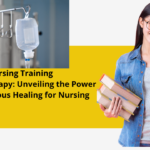Safe Injection Environment
In the medical field, injections are commonly administered to deliver medications or vaccines directly into the body. Whether you’re a nurse, doctor, or paramedical staff, ensuring a safe injection environment is crucial to protect both the healthcare professional and the patient. In this blog post, we will explore the importance of a safe injection environment, discuss key practices and precautions, and highlight the role of healthcare providers in maintaining patient safety.
Introduction
The safe administration of injections is a fundamental aspect of healthcare. It not only protects patients from potential harm but also minimizes the risk of infections and complications. A safe injection environment encompasses various components, including proper hygiene, equipment sterilization, and adherence to best practices. In this article, we will delve into these aspects and provide valuable insights for healthcare providers.
Importance of a Safe Injection Environment
A safe injection environment is vital for maintaining patient safety and preventing the transmission of infections. Inadequate precautions during the injection process can lead to the spread of bloodborne diseases such as HIV, hepatitis B, and hepatitis C. Additionally, contamination of injection sites may result in local infections or abscess formation.
Apart from infectious risks, a safe injection environment also promotes patient trust and confidence in the healthcare system. Patients are more likely to comply with recommended treatments and engage in healthcare activities if they feel that their safety and well-being are prioritized.
Best Practices for a Safe Injection Environment
Hand Hygiene
Hand hygiene is the cornerstone of infection prevention in healthcare settings. Proper hand hygiene should be practiced by all healthcare providers before and after every patient encounter. Thoroughly washing hands with soap and water for at least 20 seconds or using an alcohol-based hand sanitizer is essential to reduce the risk of transmitting pathogens during injections.
Personal Protective Equipment (PPE)
Wearing appropriate personal protective equipment such as gloves, masks, and gowns is crucial during the preparation and administration of injections. Gloves act as a barrier to protect healthcare providers from exposure to blood or body fluids, while masks and gowns prevent the inhalation or contact of potentially infectious droplets.
Sterile Equipment and Supplies
All equipment and supplies used for injections should be sterile to minimize the risk of contamination. This includes using new needles, syringes, and vials for each individual patient. Single-use disposable items should never be reused or shared between patients.
Proper Disposal of Sharps
Sharps, such as needles and lancets, pose a significant risk of injury and transmission of infections. These should be disposed of immediately after use in designated sharps containers. Never recap, bend, or break sharps, as these actions increase the chances of accidental injury. Proper disposal of sharps not only protects healthcare providers but also ensures the safety of waste management workers.
Surface Disinfection
Maintaining a clean and disinfected environment is essential in preventing the spread of infections. All surfaces and equipment in the injection area should be routinely cleaned and disinfected according to recommended guidelines. This includes disinfecting the injection site prior to administration and wiping down any contaminated surfaces afterward.
Safe Injection Practices
Healthcare providers should follow safe injection practices to minimize the risk of complications. These practices include using the appropriate needle size and length, selecting the proper injection site, and using the correct injection technique. Providers should also be aware of potential contraindications or precautions for certain injections and inform patients accordingly.
The Role of Healthcare Providers
Healthcare providers play a pivotal role in ensuring a safe injection environment and promoting patient safety. It is their responsibility to stay up-to-date with current guidelines and best practices related to injection safety. Regular training and education sessions can help refresh knowledge and reinforce proper techniques.
Providers should also actively communicate with patients, explaining the injection procedure, potential side effects, and any precautions they need to take post-injection. This open dialogue helps build trust and empowers patients to advocate for their own safety.
Conclusion
Creating a safe injection environment is essential for protecting both healthcare providers and patients. By following best practices such as hand hygiene, using personal protective equipment, and maintaining sterile equipment and supplies, healthcare professionals can significantly reduce the risk of infections and complications. Regular training and education, along with effective patient communication, are vital in ensuring a safe injection environment.
As healthcare providers, it is our duty to prioritize patient safety and advocate for best practices in injection administration. By doing so, we contribute to improved healthcare outcomes and foster trust between patients and the healthcare system.
References:
- Centers for Disease Control and Prevention. Safe Injection Practices to Prevent Transmission of Infections to Patients. Retrieved from https://www.cdc.gov/infectioncontrol/basics/safe-injection-practices.html
- World Health Organization. Injection Safety. Retrieved from https://www.who.int/health-topics/injection-safety#tab=tab_1



